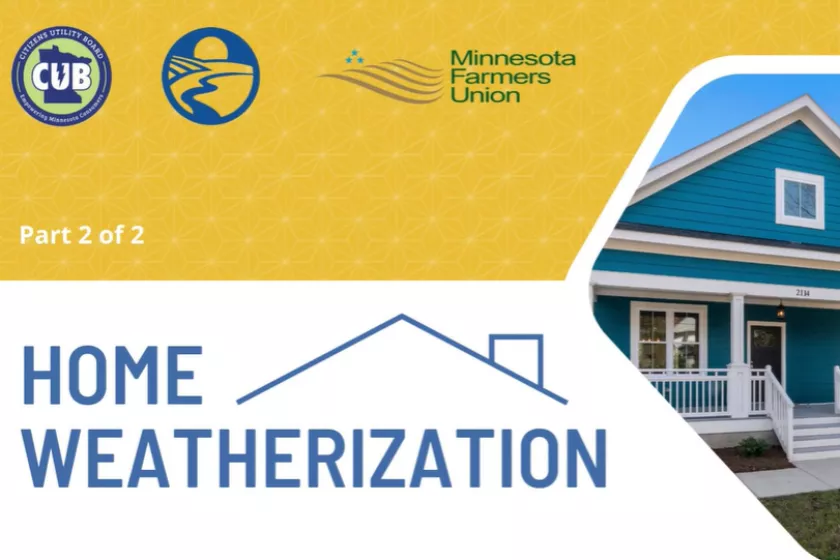"Your Guide to Saving Energy at Home" is an energy-saving checklist. Download the PDF in English, Hmong, Russian, Somali, or Spanish.
Need a guide for your organization to share with its logo? We have customizable guides too!
Whether you're looking to cut back on your energy bills or curious about what upgrades your should make to your appliances, this is the place to start. We compiled these do-it-yourself tips and resources — organized by topic in the side menu — so you can easily get to the information most useful to where you are on your clean energy journey.
 BE EFFICIENTLY COMFORTABLE
BE EFFICIENTLY COMFORTABLEDon’t heat or cool the outdoors:
If you have air registers, make sure they are clear of furniture or other obstructions so that air can circulate.
A smart thermostat can be programmed to cool or heat spaces in advance rather than maintaining a constant temperature.
A free programmable thermostat is often included for free when you have a home energy audit. Or you can check with your local utility to see if they offer rebates or free thermostats.
Get your heating system tuned up annually and replace furnace filters monthly.
If your furnace stops working and you can't afford repairs, contact the Energy Assistance Program (EAP), usually your local Community Action Agency.


Learn more about weatherization upgrades and programs that can pay for them.
Information specifically for renters, residents of manufactured homes, single-family home buyers, and landlords provide ways to be comfortable, safe, and efficient.
Assume that the home is being sold “as is.” Get it inspected by a professional who is a member of ASHI or InterNACHI. It can be a good idea to request previous utility bills to estimate heating and cooling costs in the home, as high bills could indicate that energy improvements need to be made.
Before buying a home, there are four areas you should inspect, with the highest opportunity for energy savings in Minnesota’s climate:
Ask to see recent utility bills so you know how much they might cost.
What utilities does the house or apartment have?
If there is more than one unit in the building, are there individual energy meters for each unit or is there one shared meter? Electric, natural gas, delivered fuels (propane or fuel oil), other?
Who pays the utilities: renter or landlord?
Talk with your landlord about energy:
Contact your landlord.
MN law requires that landlords maintain rental properties so that they are “fit to live in” and “kept in reasonable repair.”
If your landlord pays your utilities:
Contact your landlord to alert them that utilities need to be paid. LawHelpMN.org offers additional suggestions.
If you pay your own utilities:
Minnesota’s Cold Weather Rule (CWR) is a state law that protects you from having your electric or natural gas service shut off between October 1 and April 30. If you are behind in paying your electric or natural gas bill, contact your utility company to find out if you qualify for CWR protection, and to sign up.
